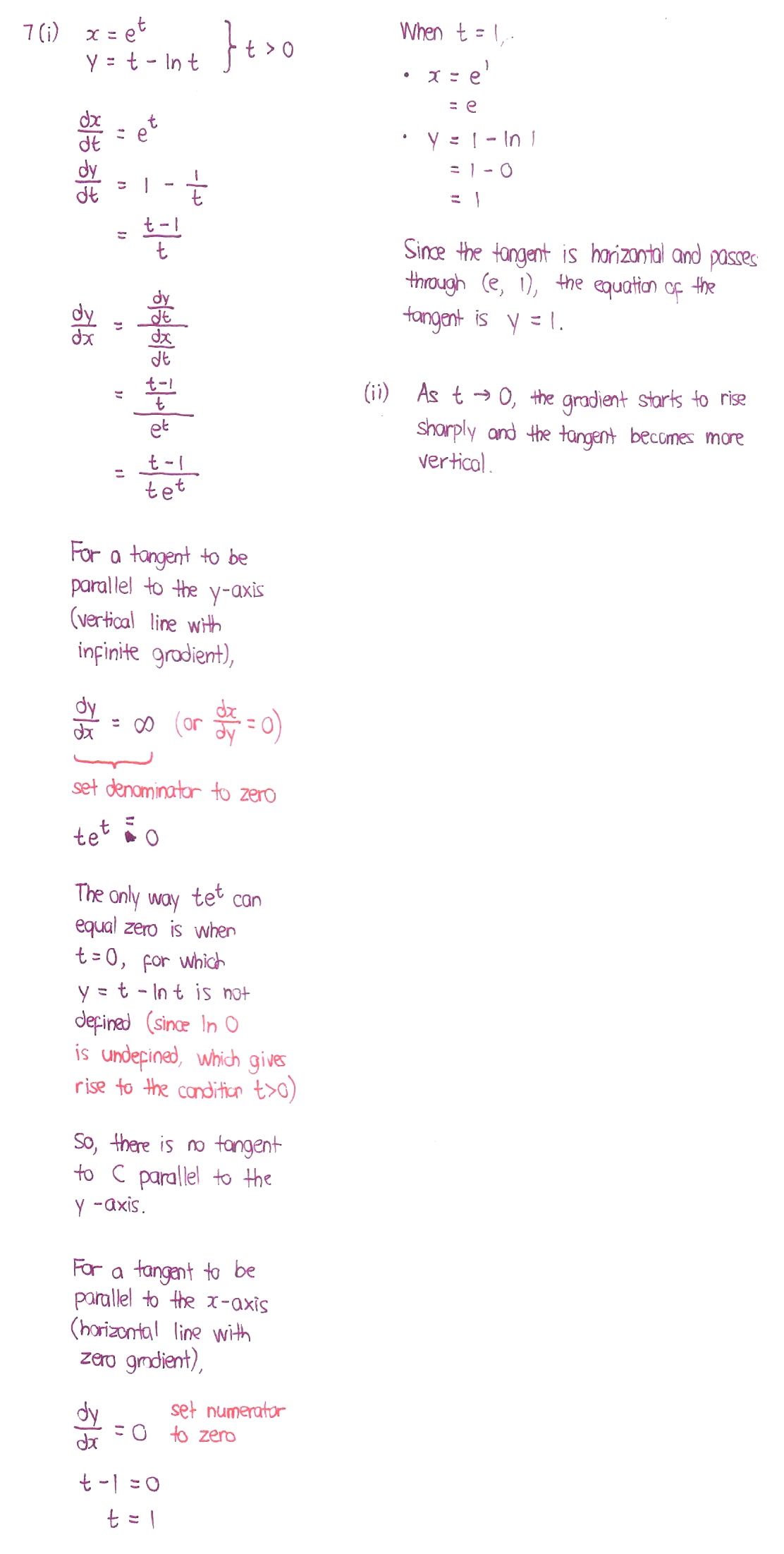Eric Nicholas K's answer to Elle's Junior College 1 H2 Maths Singapore question.
done
1 Upvotes
clear 0 Downvotes
Q7
For part two, observe that gradient is 0 when t = 1 and gradient = infinity when t is too positive small.
The thing is, the denominator t * e^t is already a small fixed number of e when t = 1, and it gets even smaller when t is lowered to decimals, whereas the numerator "increases in magnitude" from 0 to 1 as t goes from 1 to 9 (the negative sign is for downsloping purposes only).
With the magnitude of the numerator increasing to 1 and the denominator decreasing to 0, it is why the tangent becomes steeper and steeper as t goes to zero.
For part two, observe that gradient is 0 when t = 1 and gradient = infinity when t is too positive small.
The thing is, the denominator t * e^t is already a small fixed number of e when t = 1, and it gets even smaller when t is lowered to decimals, whereas the numerator "increases in magnitude" from 0 to 1 as t goes from 1 to 9 (the negative sign is for downsloping purposes only).
With the magnitude of the numerator increasing to 1 and the denominator decreasing to 0, it is why the tangent becomes steeper and steeper as t goes to zero.
Date Posted:
4 years ago
Thank u!!



